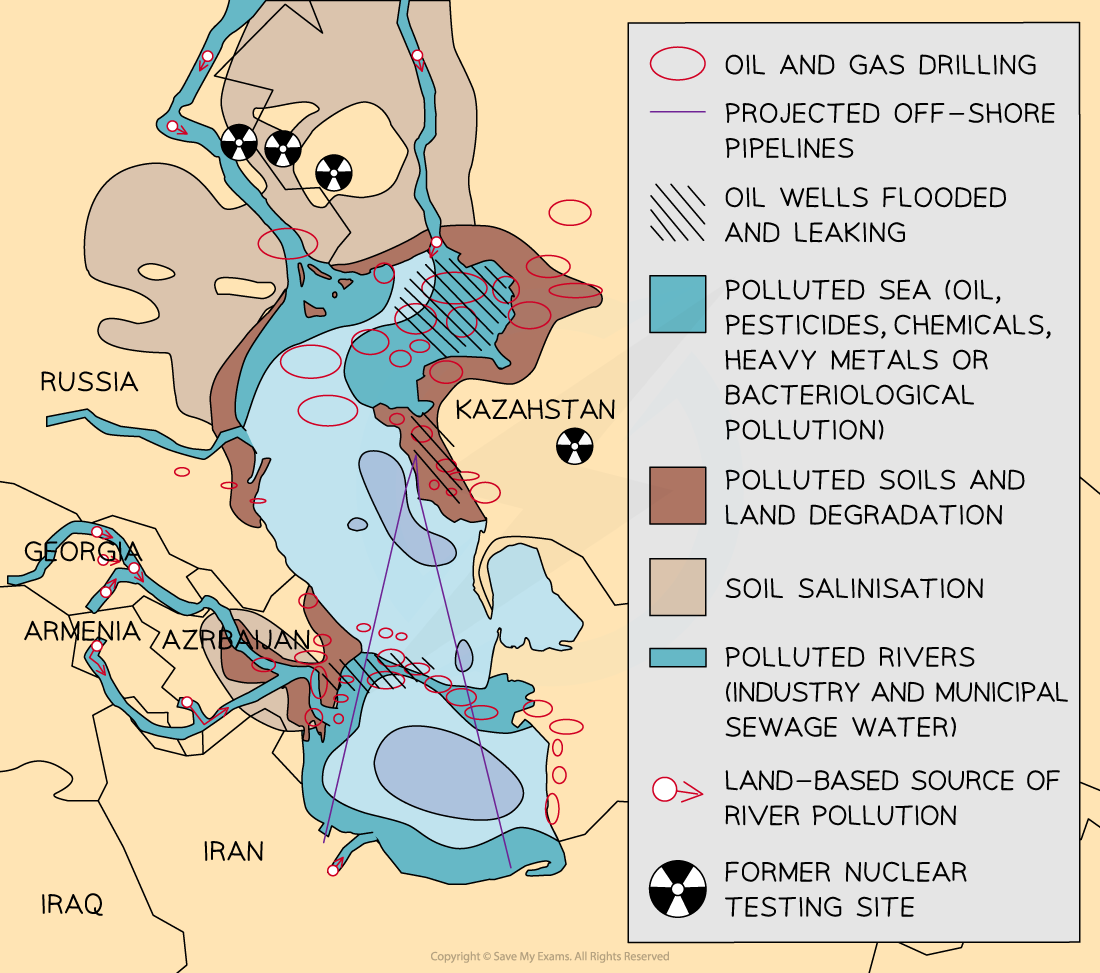| Type of Pollution |
Sources |
Impact |
| Air - combination of indoor and outdoor particulates |
- Motor vehicles powered by petrol/diesel
- Factories
- Power stations burning fossil fuels
- Forest fires
- Open fires and wood burning stoves
|
- Contributes to 12% of annual deaths worldwide
- Highest in middle and low income countries
- Indoor pollution in LEDCs due to the use of fuelwood for cooking and heating increases health impacts
- Increased release of greenhouse gases contributes to the enhanced greenhouse effect
|
| Water - when harmful substances contaminate streams, rivers, aquifers, oceans |
- Fuel spillages
- Agricultural waste/pesticides/fertilisers
- Leaching of toxic materials from waste
- Sewage disposal into rivers and seas
- Boat oil/diesel waste
- Deforestation leading to soil erosion and soil being washed into waterways
- Plastic waste - becoming micro plastics
- Radioactive waste
|
- Reduces the amount of available clean drinking water
- Reduces crop yields and may kill crops
- Damages ecosystems and habitats
- Death of wildlife
- Abnormalities in fish and other sea/water wildlife
- Accumulation of toxins in the food chain
- Spread of diseases such as cholera and typhiod
|
| Land - the presence of contaminants in the soil at high enough concentrations to pose a risk to humans and the environment |
- Solid waste - from domestic and industrial sources
- Agricultural waste/pesticides/fertilisers
- Mining waste - toxic heavy metals such as mercury
- Demolition and construction waste
|
- Reduced crop yields
- Leaching of toxins into water system
- Pollutants entering the food chain through plants
- Ecosystem and habitat destruction
- Economic losses
|
| Visual - the impacts of human made constructions or pollution that affect the visual landscape |
- Buildings
- Energy production - power stations, wind turbines
- Signs and advertising (billboards with lights)
- Power lines and structures (pylons, mobile phone masts)
- Waste
|
- Lower quality of life
- May cause stress and anxiety
- Impact on the economy
- Distraction - may lead to accidents
|
| Noise - harmful or annoying levels of noise in an environment |
- Transport - roads and airports
- Construction
- Industry
- Night activities - night clubs, bars
- Energy production - wind turbines, power stations
|
- Hearing loss
- Scares wildlife - affects feeding and breeding
- Sleep disturbance
- Stress and anxiety
- Contribute to high blood pressure, heart disease
- Affects child development
|


